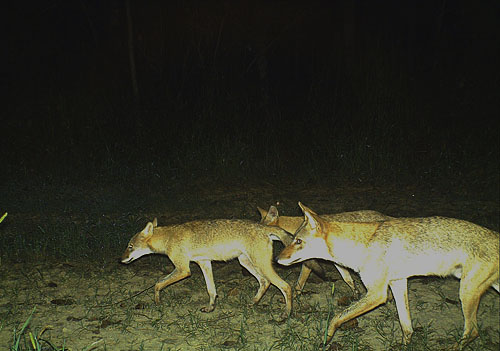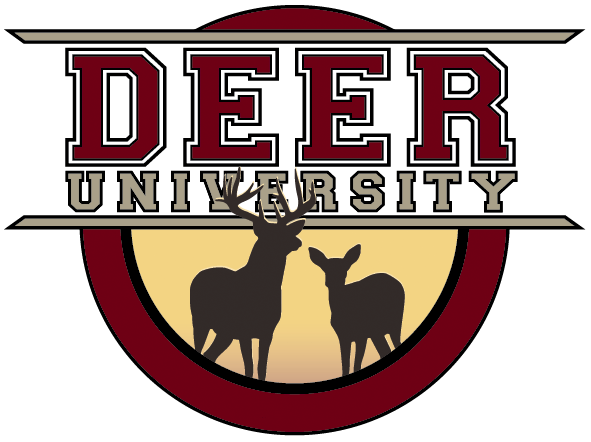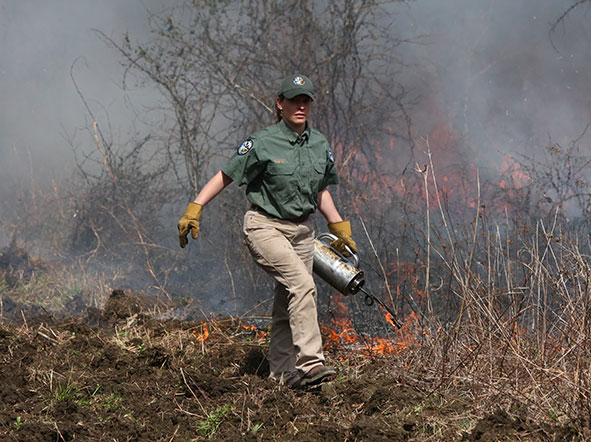Predation and Deer in the Southeast
Since the return of coyotes in large numbers throughout the Southeast there have been credible reports that coyotes can cause significant fawn mortality. Additionally, other predators, including bobcats, black bear, and feral hogs, can also impact fawn survival. Research on individual study areas have reported fawn predation estimates from 18% in Virginia to 72% in South Carolina. So, the obvious questions are, is this happening on my property and is there anything I can do about it?
To start to answer these questions, you have to place your management scenario into the proper context. First, let's look at the "big picture," and the difficulty in many areas of controlling deer populations across the landscape; View in Population Dynamics Section. Deer caused about 1.2 million vehicle accidents in the US in 2009, which was up 18% since 2004 (State Farm 2009). Deer overpopulations lead to other significant problems, including destruction of farmers' crops and homeowners' landscaping and spread of the ticks that carry diseases that spread to humans; View in Diseases and Parasites Section. These overpopulation issues are bound to get worse, as the number of deer hunters and their harvest of deer has not kept pace with deer population growth.
The next context to consider is your localized management situation. Here, management goals and your ability to fulfill management objectives are important considerations. Management approaches that target mature animals for harvest require consistent and relatively high fawn recruitment for a steady supply of these animals. View in Deer Management Section
A significant number of bucks die annually from natural mortality, bluetongue and brain infections, accidents, and harvest on neighboring properties, so your fawn recruitment must be enough to allow for these deaths and still deliver a meaningful number of bucks into mature age classes for harvest.
Significant, extended losses to predators in this context may require the deer manager to take action. In contrast, management approaches targeting recreational harvest of any younger buck and some adult females may not have any problem with recruitment. In fact, many management programs, regardless of goals, have difficulty harvesting enough animals each hunting season to control deer density. In these cases, some predation of fawns might make your hunting less work (population control) and more recreation.
A research project conducted by MSU Deer Lab student Kamen Campbell determined that high numbers of coyotes and bobcats on a property does not necessarily mean that fawn recruitment will be low. Kamen studied 18 different areas in Mississippi and Alabama and found that many properties with very high predator numbers also had very high fawn recruitment! Also, Kamen found that many properties with very low predator numbers also had low fawn recruitment. So, there's more to fawn recruitment than just predator numbers. Habitat quality and deer population density also play key roles. The MSU Deer Lab is currently examining relationships between fawn recruitment and specific habitat characteristics.
So how can you determine if predators are impacting fawn recruitment on your property? First, don't make any conclusions based on one year — you need several years of fawn recruitment data (from hunter observation data, lactation data, or camera survey data) to safely conclude you have a recruitment problem. Second, you have to consider deer condition. In other words, if deer body weights, fat levels, antler growth are all very good, but fawn recruitment is low, you may have a predator problem. But again, this may be due to a lack of good fawning cover. We recommend seeking advice from a qualified deer biologist to help you make any management decisions regarding predators.
Local actions to limit predation could involve habitat improvements to increase the amount of fawn escape cover or predator management. In some cases, predator management has been shown to increase fawn recruitment. Timely removal of coyotes and bobcats by professional trappers during the fawning season certainly has merit as an option for deer managers where fawn recruitment is very low. However, be advised that predator control is expensive and will likely be needed on an annual basis. We recommend predator control as a last option only after a deer biologist has determined that sufficient habitat improvements have been made.
If habitat management and predator reduction are not viable alternatives, there is another fairly simple, but perhaps undesirable, solution. If you have to "live with" significant predator mortality on fawns, then you will have to decrease your harvest rate of deer to one that is consistent with your fawn recruitment.

Coyote Pack

Coyote With Fawn




